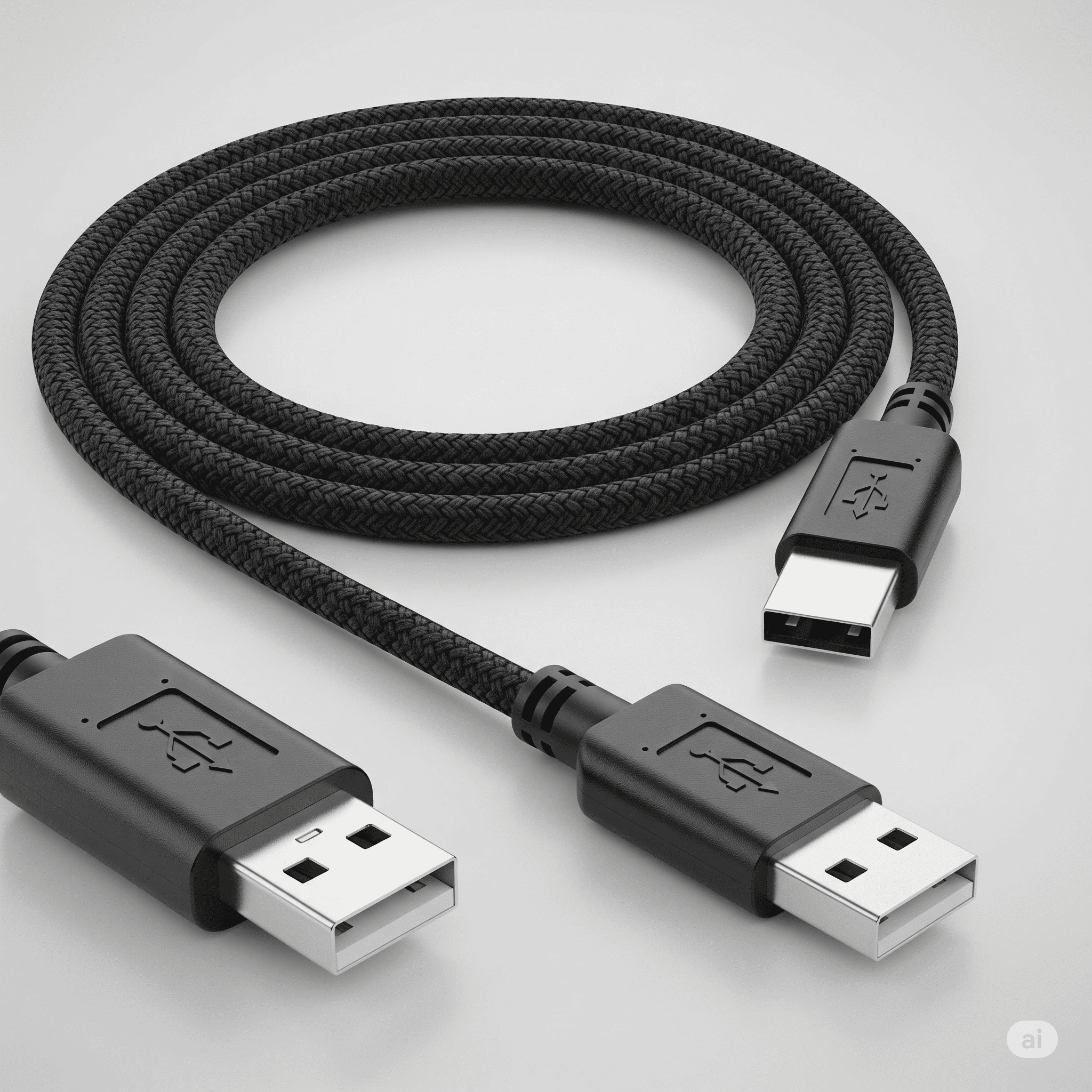Kingsgrove Branch:
USB Extension Cable

USB extension cable: the unsung hero of modern connectivity. Imagine needing to connect a device further away than its cord allows. Suddenly, that far-flung printer or external hard drive becomes practically within reach, thanks to the magic of a well-chosen USB extension cable. These cables, available in a multitude of types and lengths, seamlessly bridge the gap between your devices, whether you're setting up a home theater system, a gaming rig, or simply adding some extra workspace for your laptop.
From basic connections to high-speed data transfers, these cables are essential for seamless connectivity in a world of diverse gadgets.
This guide delves into the world of USB extension cables, exploring their diverse types, functionalities, and crucial considerations for choosing the right one. We'll cover everything from basic setup to troubleshooting common issues, ensuring you can confidently navigate the vast landscape of connectivity options.
USB extension cables are lifesavers, especially when your USB port is a mile away from your device. Need to connect that old printer? Or maybe you just want to move your keyboard further from the laptop, you can use a USB C to USB adapter for your extension cable! Check out this handy guide on USB C to USB adapter for more info.
Just remember, a good extension cable can make a world of difference, no matter how far you need to reach.
USB Extension Cables: A Comprehensive Guide
USB extension cables are essential accessories for connecting devices that need extra reach or different placement. They extend the physical reach of a USB port, allowing you to connect peripherals further away from your computer or other devices. This guide dives deep into everything you need to know about USB extension cables, from their various types and functions to choosing the right one for your needs and troubleshooting common issues.
Introduction to USB Extension Cables
USB extension cables are simply USB cables that are longer than standard cables. They serve a vital purpose, enabling you to connect USB devices to your computer or other USB-enabled equipment at a distance. Different types of USB extension cables exist, catering to various USB connection standards.
- USB A to B: Commonly used for older peripherals like printers and scanners.
- USB A to Micro-B: Connects devices like older smartphones and tablets to computers.
- USB C to C: Ideal for modern devices with USB-C ports, offering high-speed data transfer and power delivery.
USB extension cables are crucial in diverse applications, from extending the range of your gaming peripherals to enabling remote data acquisition in industrial settings.
| Typical Length | Power Delivery |
|---|---|
| 1-5 meters | Limited (USB 2.0) |
| 1-10 meters | Limited (USB 2.0) |
| 1-10 meters | High |
| Typical Use Case |
|---|
| Connecting gaming peripherals like keyboards, mice, and headsets to a computer from a further distance |
| Connecting USB devices to a home entertainment system, like external hard drives or media players |
| Connecting sensors and actuators to control systems |
| Description |
|---|
| Measured in meters, from a few centimeters to several meters. |
| Indicates the maximum data transfer rate and power delivery capabilities. |
| Protects the signal from interference, often crucial for longer cables. |
Functionality and Performance
USB extension cables function by carrying the electrical signals from a USB port to a USB device. Their performance depends on various factors, such as cable length, material, and shielding.
- Cable Length: Longer cables are more prone to signal degradation, potentially impacting data transfer speed.
- Material: High-quality materials are vital for ensuring durability and minimizing signal loss.
- Shielding: Proper shielding prevents interference from external sources, maintaining signal integrity.
USB standards like USB 2.0, 3.0, 3.1, and USB-C significantly affect data transfer rates and power delivery. Troubleshooting USB extension cable issues involves checking connections, ensuring the cable is not damaged, and confirming compatibility with the devices.
Design and Construction
USB extension cables typically consist of a conductive core, insulation, and a protective outer jacket.
- Connectors: Different types of connectors are used for various USB standards, ensuring proper compatibility.
- Materials: Materials like copper and various plastics determine the cable's performance and durability.
- Termination: Proper termination of the cable ensures signal integrity and prevents signal loss.
Can be more expensive
Lower conductivity compared to copper
| Pros | |
|---|---|
| Excellent conductivity, high durability | |
| Lightweight, relatively inexpensive |
Choosing the Right USB Extension Cable
Consider these factors when selecting a USB extension cable:
- Cable Length: Choose a length that accommodates your specific application's requirements.
- Cable Quality: Higher-quality cables often offer better performance and durability.
- Compatibility: Ensure the cable's connectors match the devices you intend to connect.
- Price Range: Higher-priced cables usually translate to better quality and performance.
Troubleshooting and Maintenance
Common problems include connection issues, signal degradation, and cable damage. Maintaining your USB extension cables involves proper storage and handling to extend their lifespan.
- Identifying Damaged Cables: Look for frayed wires, loose connections, or signs of physical damage.
- Troubleshooting Steps: Check connections, examine the cable, and ensure compatibility with devices.
Applications and Use Cases
USB extension cables are used extensively in various applications, including home theaters, gaming setups, and industrial automation.
USB extension cables are great for reaching those hard-to-reach ports, but consider the future. Modern devices are increasingly using USB Type-C USB Type-C ports, so make sure your extension cable is compatible. That way, you won't be stuck with a cable that's just gathering dust. It's always a good idea to check for compatibility before buying a USB extension cable.
- Home Theater: Connecting external hard drives or media players.
- Gaming: Extending peripherals to create a more ergonomic setup.
- Medical Devices: Connecting equipment for data acquisition and analysis.
| Recommended Cable Type |
|---|
| USB 2.0 or 3.0 A to B, or USB-C depending on device |
| USB 3.0 A to B or USB-C depending on device |
Content Structure for a 1500+ Word Article, Usb extension cable
A comprehensive article on USB extension cables should cover the history of USB, future trends, and a detailed table of contents.
- History of USB Extension Cables: Tracing the evolution of USB technology and extension cables.
- Future Trends: Exploring potential developments in USB extension cable technology.
Last Word
In conclusion, USB extension cables are a vital component for extending the reach of your USB devices. Understanding the various types, their performance characteristics, and the crucial factors to consider when making a purchase empowers you to make informed decisions. This guide has equipped you with the knowledge to select the ideal cable for your specific needs, ensuring a smooth and reliable connection.
With the right extension cable, you'll not only enhance your productivity but also unlock the full potential of your devices.
Common Queries
What are the different types of USB extension cables?
Common types include A to B, A to Micro-B, and USB-C to USB-C. Each type caters to different device connections, so it's important to match the connector types on your devices.
How do I troubleshoot a USB extension cable that isn't working?
First, check the connections on both ends. If that doesn't work, try a different USB port. If the problem persists, consider checking the cable for physical damage. A faulty cable will often lead to a lack of power delivery or data transfer.
What's the difference between USB 2.0 and USB 3.0 cables?
USB 3.0 cables offer faster data transfer speeds than USB 2.0 cables. This is a key consideration for applications that require rapid data transmission, such as transferring large files.
What materials are used in USB extension cables?
Common materials include PVC, nylon, and braided materials. The choice of material often impacts durability, cost, and the cable's overall performance.
Recent posts

Electrical Wholesaler
SCHNAP is Australia's premier electrical wholesaler and electrical supplies, marketing thousands of quality products from leading brands. Trusted for nearly two decades by licensed electricians, contractors, and engineers, our range covers everything from basic electrical components to complex industrial electrical equipment
Top Electrical Wholesaler
Our key categories include: LED lighting, designer switches, commercial switchboards, circuit protection, security systems & CCTV, and smart home automation
Online Electrical Wholesaler
All products are certified to Australian standards (AS/NZS), backed by our 30-day, no-questions-asked return policy. Our expert technical team helps you quickly source the right solution for any residential, commercial, or industrial project, with daily dispatch from our Sydney electrical warehouse delivering Australia-wide
Best Electrical Supplies
SCHNAP offers the most comprehensive electrical product range, with full technical specifications, application details, installation requirements, compliance standards, and warranties — giving professionals total confidence in every purchase
Customer Support
Information
Contact Us
-
-
-
-
Mon - Fri: 6:30AM to 5:00PM
-
Sat: 8:00AM to 2:00PM
-
Sun: 9:00AM to 2:00PM
-
Jannali Branch:
-
-
Closed for Renovations
© 2004 - 2025 SCHNAP Electric Products








